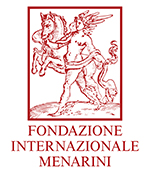
Press Release
What foods prevent kidney stones?
A vegetarian diet may be helpful, a little less so the vegan diet
Rome, 26 March 2015 – Kidney stones, not just pain and discomfort but also the possible symptoms of a more serious disease. This is the basis of the discussion which will involve world experts in Rome for the “Consensus conference for the metabolic diagnosis and medical prevention of calcium nephrolithiasis and its systemic manifestations”.
The conference, scheduled from Thursday 26 to Saturday 28 March in Rome, has been organised by the Nephrology Department of the Columbus-Gemelli University Hospital, the Sacro Cuore Catholic University of Rome, and promoted by the Fondazione Internazionale Menarini.
It is estimated that just on 18% of the population, that is, approximately five million Italians, suffer from nephrolithiasis,which entails the formation of “stones”, which often consist of various calcium salts (urate, phosphate, etc.) in the urinary tract. Therefore, this is a very widespread disease which, apart from painful episodes of colic, is often considered as being almost banal. For this reason, its prevention could be a very useful weapon in combating the disease and preventing the onset of any complications.
Hence the Nephrological Stone Clinic coordinated by Professor Giovanni Gambaro has been set up in the Nephrology Operating Unit of the Integrated Columbus Complex, where cases requiring more in-depth investigations are evaluated.
“The episodes of kidney stones are constantly on the rise due to our lifestyle, eating habits and increase in body weight. The causes of kidney stones are often triggered by poor hydration that facilitates the formation of crystals giving rise to the stones, by excessive intakes of certain foods such as animal proteins, those rich in fructose and salt, and also the fact of being overweight” explains Gambaro.
But be careful not to exceed in the opposite direction by also eliminating, in addition to meat, all foods of animal origin. “The instructions that for years have been given to patients with kidney stones not to eat milk, cheese and dairy foods, is in the majority of cases completely wrong and risky, as in the long term it can give rise to a situation of osteopenia and osteoporosis”, warns Gambaro. “Therefore as a general rule, the vegetarian diet, and even better, the Mediterranean diet, are good for patients with kidney stones, whereas the vegan diet, which eliminates all animal derivates such as milk and cheese, presents some risks. This is because the intake of calcium is too low, while a lot of salt may be eaten with vegetables which, in order to be “digested” at an intestinal level, has to interact with the calcium. Since this reaction cannot take place, the salt is freely absorbed at an intestinal level and finishes its journey in the body at a urinary level, where it accumulates in great quantities with an increased risk of the formation of kidney stones”.
In any case,the stones may also represent an“alarm bell” which allows the physician to recognise the presence of certain diseases such as diabetes, gout, parathyroid disorders or genetic forms. For these reasons, and also because kidney stones can provoke other consequences, like urinary infections, renal impairment (even requiring dialysis), and cardiovascular diseases, it is important not to underestimate their presence.
“It may happen that a kidney stone is detected that during an examination, perhaps an X-ray, a CAT scan, or an ultrasound, and for some reason the decision is made not to remove it, usually because it is very small”, continues Gambaro. “Or it may be that the stone is expelled or removed due to causing colic for example. In any case, it is always important to carry out a minimum of diagnostic screening, because the presence of a kidney stone may be the early symptom of a more serious disease. It is not necessary to carry out complicated exams, and a blood test may be all it needs to check the levels of certain substances, such as creatinine, calcium, phosphorous, sodium and potassium. A banal urine analysis can also be very revealing. Even though these are very and very inexpensive simple exams, this first diagnostic level already allows for ruling out the more frequent and more serious forms of secondary causes. It may also be possible to avoid an urinary infection, and better still, even a heart attack”.
Download PDF